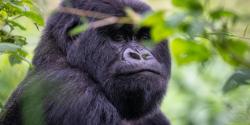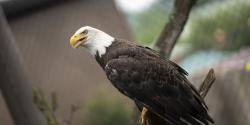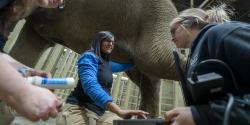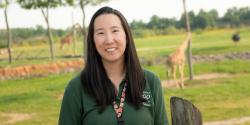Matschie's tree kangaroos are an endangered species found exclusively in the Huon Peninsula of Papua New Guinea and the nearby island of Umboi.
Extremely agile animals, tree kangaroos can rapidly travel from tree to tree by safely jumping down to the ground from 60 feet to move to another tree to climb.
The Columbus Zoo and Aquarium is part of the Association of Zoos and Aquariums' (AZA) Saving Animals from Extinction (SAFE) program, which aims to help protect tree kangaroos.
Scientific Name: Dendrolagus matschiei
Conservation Status: Endangered
Size: Adult males stand about 26 inches tall, with a tail nearly equal to body length. Females are slightly smaller.
Weight: Ranges from 13 to 29 lbs.
Median Life Expectancy: 12 yearts









